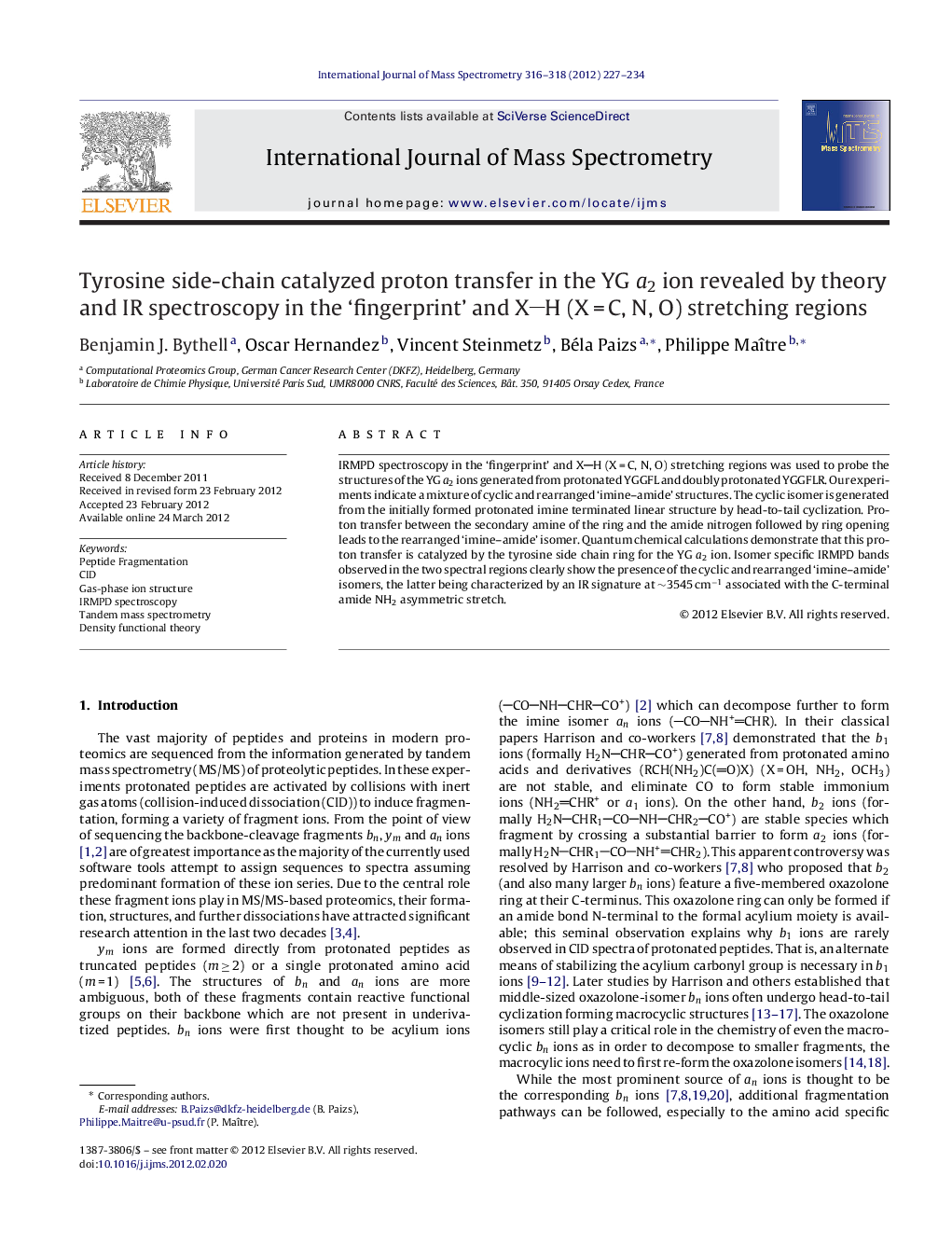| Article ID | Journal | Published Year | Pages | File Type |
|---|---|---|---|---|
| 1192254 | International Journal of Mass Spectrometry | 2012 | 8 Pages |
IRMPD spectroscopy in the ‘fingerprint’ and XH (X = C, N, O) stretching regions was used to probe the structures of the YG a2 ions generated from protonated YGGFL and doubly protonated YGGFLR. Our experiments indicate a mixture of cyclic and rearranged ‘imine–amide’ structures. The cyclic isomer is generated from the initially formed protonated imine terminated linear structure by head-to-tail cyclization. Proton transfer between the secondary amine of the ring and the amide nitrogen followed by ring opening leads to the rearranged ‘imine–amide’ isomer. Quantum chemical calculations demonstrate that this proton transfer is catalyzed by the tyrosine side chain ring for the YG a2 ion. Isomer specific IRMPD bands observed in the two spectral regions clearly show the presence of the cyclic and rearranged ‘imine–amide’ isomers, the latter being characterized by an IR signature at ∼3545 cm−1 associated with the C-terminal amide NH2 asymmetric stretch.
Graphical abstractFigure optionsDownload full-size imageDownload high-quality image (163 K)Download as PowerPoint slideHighlights► Structure and energetics of YG a2 ion are investigated by MS/MS and theory. ► IRMPD spectroscopy is performed in the ‘fingerprint’ and XH stretching regions. ► Infrared isomer-specific signatures of two isomers of YG a2 ion are observed. ► 1,3-Proton transfer within a 5-membered ring is caralyzed by tyrosine side-chain.
